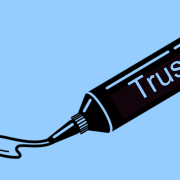Did you know that humans are the only species that consciously or unconsciously suppress their stress recovery? Well actually, according to Stanford University Professor Robert Sapolsky, other primates like baboons do it as well. It’s one of the things that intrigues participants in my sessions on developing stress hardiness and resilience strategies.

It seems the higher evolved our intelligence is, the worse we are at protecting ourselves from the ravages of stress on our physical and mental health. As we have evolved, we have moved away from how our primitive ancestors handled stressful situations. A quick recovery was essential. It meant life or death.
Now, the stress response we trigger is usually with our thoughts, fears and worries. It’s not the same as if we’re being chased by a black bear or in my case, thinking we might be chased by one – something that happened while I was visiting my sister in Wild West Virginia this summer. FYI, the bear didn’t appear near her house until after I was gone.
Since it was only a thought, I didn’t have to run for my life. What would have happened though, IF I had let this thought hijack me emotionally? The hormones, glucose and neurotransmitters my body would have produced wouldn’t have metabolized, or at least not as quickly, as if I was running for my life. I would have had extra stress on my heart, blood vessels and other organs for hours, maybe even days. Our imagination is a wonderful thing, until it isn’t…
 And yet, there are strategies, beyond the toddler’s shame and blame game (thank you Dr. Gabor Maté), that we can learn and apply to support our stress recovery in modern times. Science has provided us with the knowledge of how our bodies function and how we can best adapt to distress. We can even learn stress mitigating behaviors from other species, that enable us to become more resilient.
And yet, there are strategies, beyond the toddler’s shame and blame game (thank you Dr. Gabor Maté), that we can learn and apply to support our stress recovery in modern times. Science has provided us with the knowledge of how our bodies function and how we can best adapt to distress. We can even learn stress mitigating behaviors from other species, that enable us to become more resilient.
One participant asked me why we’ve evolved so far away from how we are meant to respond. Again, I think the reason has to be due to our evolved intelligence. We are continually triggering a stress response for non-physical (hence mental and emotional) causes. We have imaginations that create (disaster) situations which are unlikely to occur. In the words of Mark Twain: “I’ve been through some terrible things in life, some of which actually happened.”
Now, some worry is good for us. It can help us prepare for or prevent a future event that might be harmful to us. “That can lead to some important choices. If you worry about a car accident, you’ll wear your seatbelt. If you worry about skin cancer, you’ll wear sunscreen. Worry prompts you to do something that might be inconvenient, but protective. It also makes you prepare: If you fret about a job interview, you’ll spend more time preparing for it. “ How to Worry Better
The most definitive research (*see note below) I can find is entitled ‘Worry’s Deceit’ by Pennsylvania State University researchers.
They found that about 91 percent of worries didn’t come to pass. Of the remaining 9 percent of worries that did come true, the outcome was better than expected about a third of the time. For 24% of participants, exactly zero of their worries materialized. What a colossal energy drainer, don’t you think?

We are doing this constantly in our daily lives, and it’s taking its toll on our health. We need to learn healthy strategies to deal quickly with stress and build resiliency to thrive. We need to learn when we can make stress our friend. It is, after all, a signal. How we interpret that signal is something we can choose. For that, we need to become emotionally agile, so we can make the right choices that will support us. Luckily, our brains are malleable. We can learn how, no matter our age.
* LaFreniere, Lucas & Newman, Michelle. (2020). Exposing Worry’s Deceit: Percentage of Untrue Worries in Generalized Anxiety Disorder Treatment. Behavior Therapy. 51. 413–423. 10.1016/j.beth.2019.07.003.




 And yet, there are strategies, beyond the toddler’s shame and blame game (thank you Dr. Gabor Maté), that we can learn and apply to support our stress recovery in modern times. Science has provided us with the knowledge of how our bodies function and how we can best adapt to distress. We can even learn stress mitigating behaviors from other species, that enable us to become more resilient.
And yet, there are strategies, beyond the toddler’s shame and blame game (thank you Dr. Gabor Maté), that we can learn and apply to support our stress recovery in modern times. Science has provided us with the knowledge of how our bodies function and how we can best adapt to distress. We can even learn stress mitigating behaviors from other species, that enable us to become more resilient.















